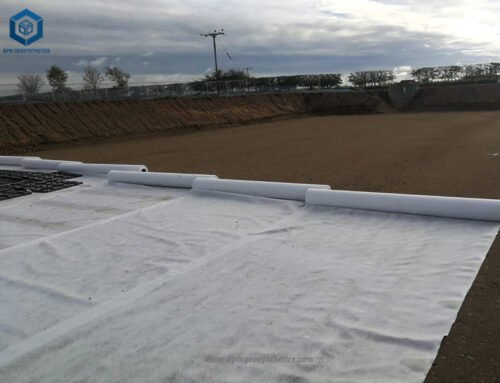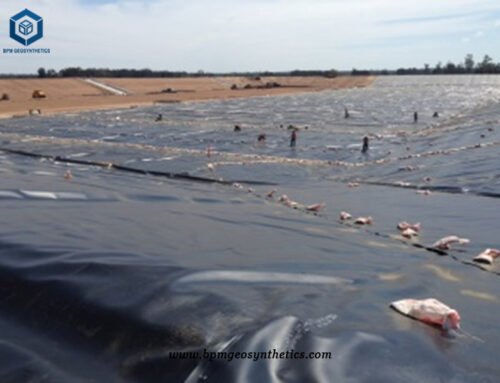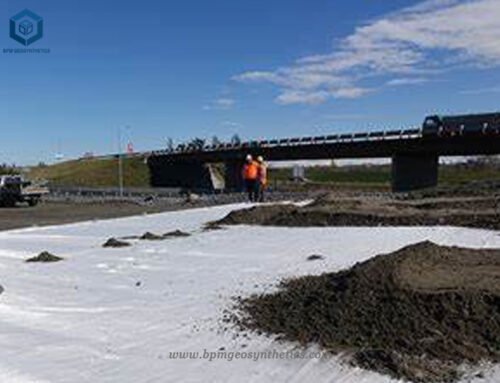Filament geotextile is the permeable and durable geosynthetic material widely used in asphalt pavement, cement concrete pavement and subgrade enhancement. As the leading geotextile manufacturer and supplier, BPM Geosynthetics offers a wide range of filamment non woven geotextile in custom weights at best factory price.
1. What Is Filament Geotextile?
Filament geotextile is a type of geotextile fabric manufactured using high-quality virgin continuous filaments of polypropylene. The production process involves extruding the filaments, laying them into a web, and then subjecting them to either needle-punching or heat bonding. The resulting product is rolled into the finished filament geotextile.
Filament geotextile possesses several desirable characteristics, including excellent tear resistance, high puncture resistance, effective water permeability and filtration, as well as good acid and alkali resistance. It is commonly employed in conjunction with soil, rock, or other geotechnical materials as an integral component of various human-made projects, structures, or systems. Its primary purpose is to filter soil particles from drainage systems and stabilize roadways, thereby enhancing their performance and lifespan.
There is a variant known as Filament Singed Geotextile, which represents an enhanced quality substrate for new road surfaces and subgrades. This particular product is produced by subjecting a poly fat, sticky filament geotextile to a single singeing process. It exhibits high tensile strength in both horizontal and vertical directions, along with a high modulus and excellent resistance to high and low temperatures. Surface coating treatment further enhances its anti-alkali performance and resistance to aging.
Filament geotextile finds broad application in asphalt pavement, cement concrete pavement, and subgrade enhancement, making it suitable for both rigid and flexible road structures. Compared to traditional road fabrics, this type of geotextile fabric offers cost reduction, extended lifespan, and improved prevention of road reflective cracking.
2. What Are Benifits of Filament Geotextile for Road Construction?
Filament geotextile offers a range of benefits for road construction, including excellent hydraulic performance, high bursting and tensile strength, standardized production processes, proven competitiveness, soil separation and filtration capabilities, erosion control, improved construction efficiency, long-term durability, and cost-effectiveness. These advantages make it a valuable material for enhancing the performance, stability, and longevity of road infrastructure.
2.1 Proven Competitiveness
Filament geotextile has demonstrated its competitiveness in road construction and geotechnical applications. It has been successfully used in numerous projects, showcasing its effectiveness and reliability in enhancing the performance and longevity of infrastructure.
2.2 Soil Separation and Filtration
Filament geotextile acts as a barrier, preventing the mixing of different soil layers and maintaining their individual integrity. It also provides filtration by allowing water to pass through while preventing the movement of fine particles. This helps to maintain the stability and functionality of the road structure.
2.3 Erosion Control
Filament geotextile can be used to control erosion in road construction projects. By stabilizing the soil and preventing its displacement, it helps to mitigate the impact of water flow and reduce soil erosion. This ensures the long-term stability and integrity of the road.
2.4 Improved Construction Efficiency
The use of filament geotextile in road construction can enhance construction efficiency. It simplifies the construction process by reducing the need for extensive excavation and the use of additional materials. This results in cost savings and shorter construction timelines.
2.5 Long-Term Durability
Filament geotextile exhibits excellent resistance to environmental factors such as UV radiation, chemicals, and biological degradation. This ensures its long-term durability and performance, even in harsh conditions.
2.6 Cost-Effectiveness
By providing reinforcement and stabilization to the road structure, filament geotextile reduces the need for costly repairs and maintenance over time. Its longevity and effectiveness translate into cost savings throughout the lifespan of the infrastructure.
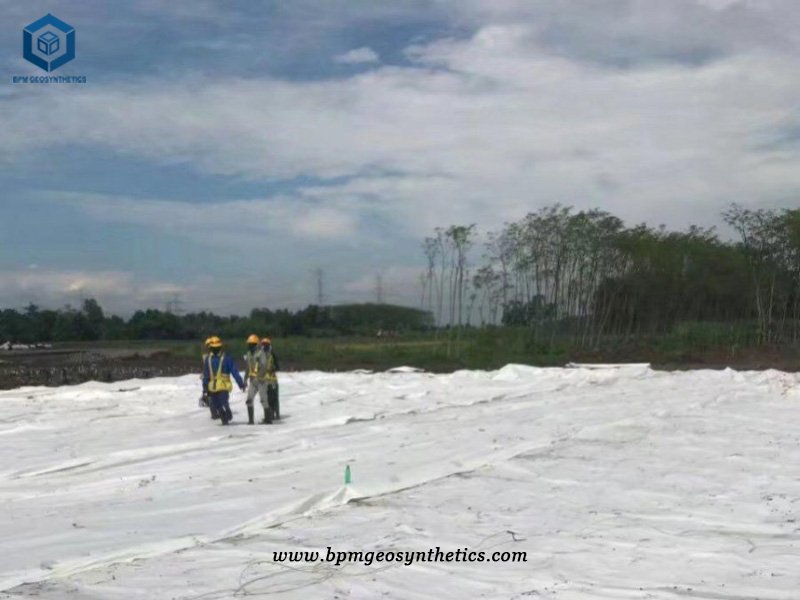
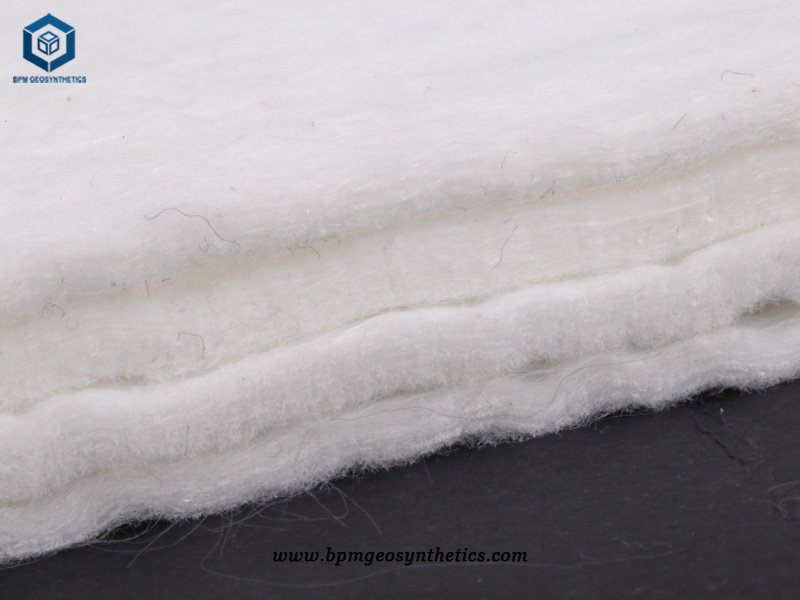
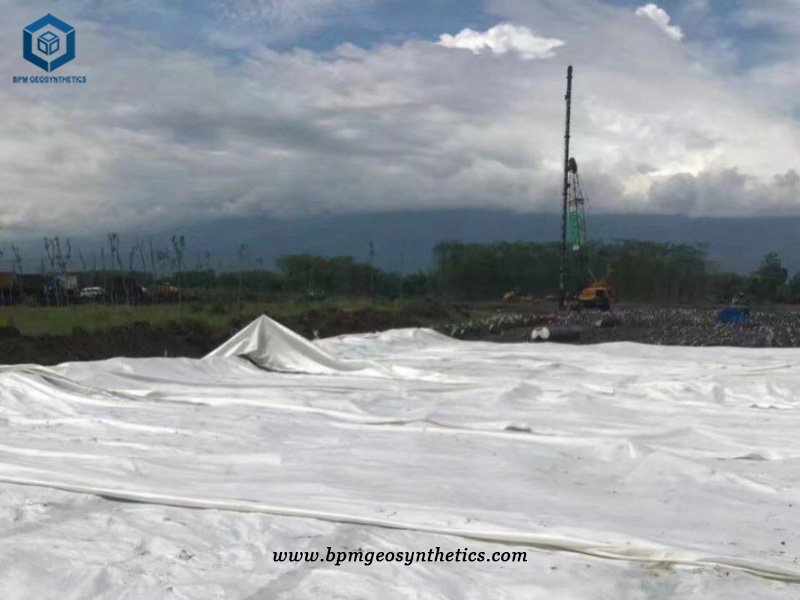
3. Case Study of Filament Geotextile for Road Construction in Indonesia
The use of PET filament geotextiles in road construction projects in Indonesia has proven to be highly beneficial. These geotextiles are specifically designed to filter soil particles from drainage systems and provide stability to roadways, thereby increasing their performance life. Non-woven geotextiles, particularly in the form of PET filament geotextiles, have found wide application in various civil engineering projects, including subsurface drainage, roadway separation and stabilization, and underground detention and retention systems.
One of the key advantages of using non-woven geotextiles is their ability to prevent soil erosion and the collapse of roadbeds due to rainwater scouring. In road construction, both for new road laying and the transformation of existing roads, filament geotextiles are used between different material layers to reinforce and isolate them. This enhances the shear strength of the subgrade soil and maintains the overall strength of the different layers of the road structure. By increasing the tensile strength of the soil, these geotextiles effectively strengthen the roadbed, prevent soil erosion, and safeguard against roadbed collapse caused by rain erosion.
PET filament geotextiles possess several desirable properties, including being lightweight, having good overall continuity, being easy to construct with, and exhibiting high tensile strength and corrosion resistance. The geotextiles maintain their permeability while also preserving their separation function. Under increasing applied loads, the trapezoidal PET filament geotextiles tear slowly along the direction of the cut until fracture occurs, demonstrating their durability and strength.
In a specific case study, we provided our client with 200g/m2 filament geotextiles for their highway projects in Indonesia. These geotextiles were chosen to enhance the soil’s tensile strength and were utilized as a rapid dewatering layer within the subgrade. It was essential for the filament non-woven geotextiles to maintain their permeability without compromising their separation function. By preventing soil erosion and ensuring the stability of the roadbed against rainwater scouring, these geotextiles played a crucial role in the project’s success.
PET filament geotextiles are an ideal geotechnical material for reinforcing, protecting, draining, isolating, filtering, and shaping pavements. Their utilization improves the overall quality and longevity of the project, reduces construction time, and helps lower project costs. By incorporating PET filament geotextiles into road construction projects, Indonesia benefits from enhanced infrastructure that can withstand environmental challenges and serve the transportation needs of the region effectively.
4. About BPM Geosynthetics
BPM has been specializing in delivering one stop geosynthetics products and solutions to worldwide customers since its foundation in 2007. BPM geosynthetics is not only manufacturing best quality geosynthetic products but also providing professional design and installation service. OEM, ODM, custom development and fabrication are also available. If you have any questions or inquiries, please contact us, we will reply as soon as possible.


